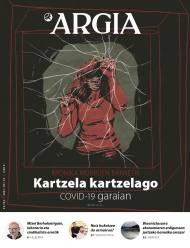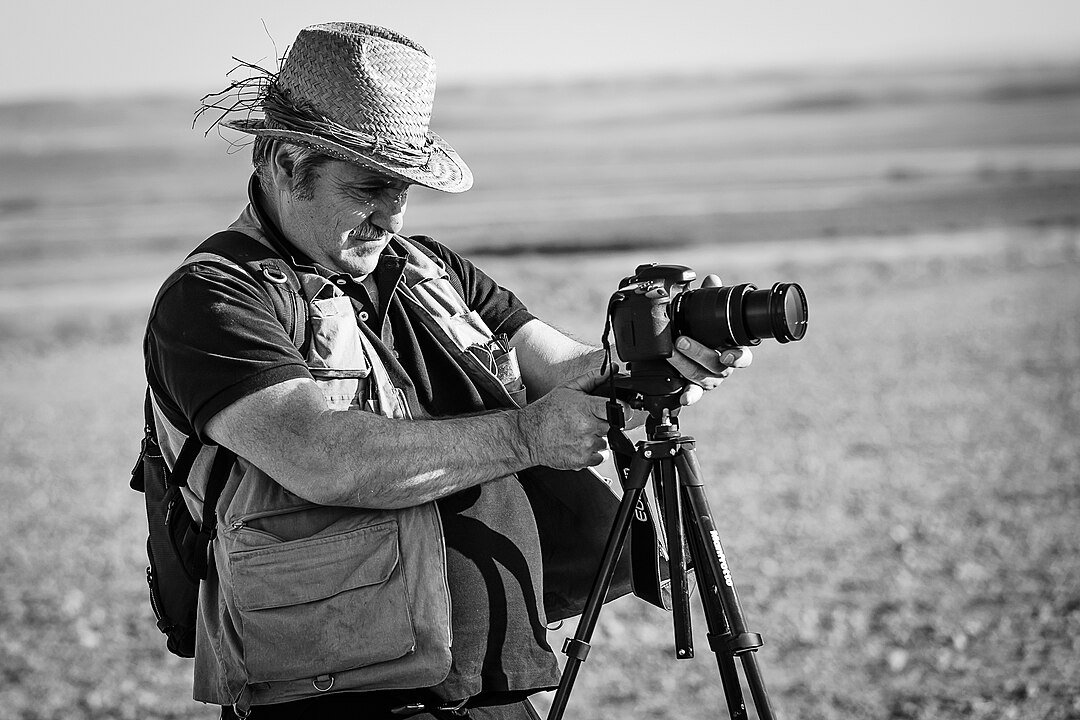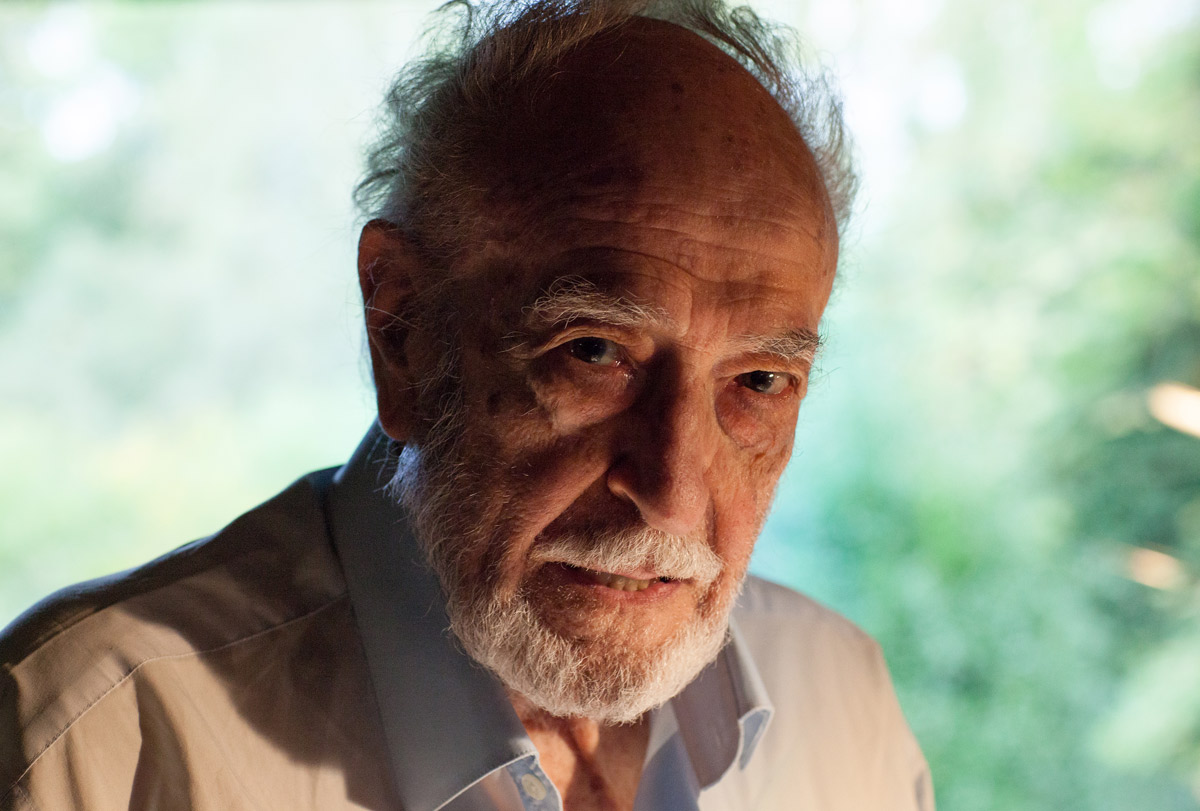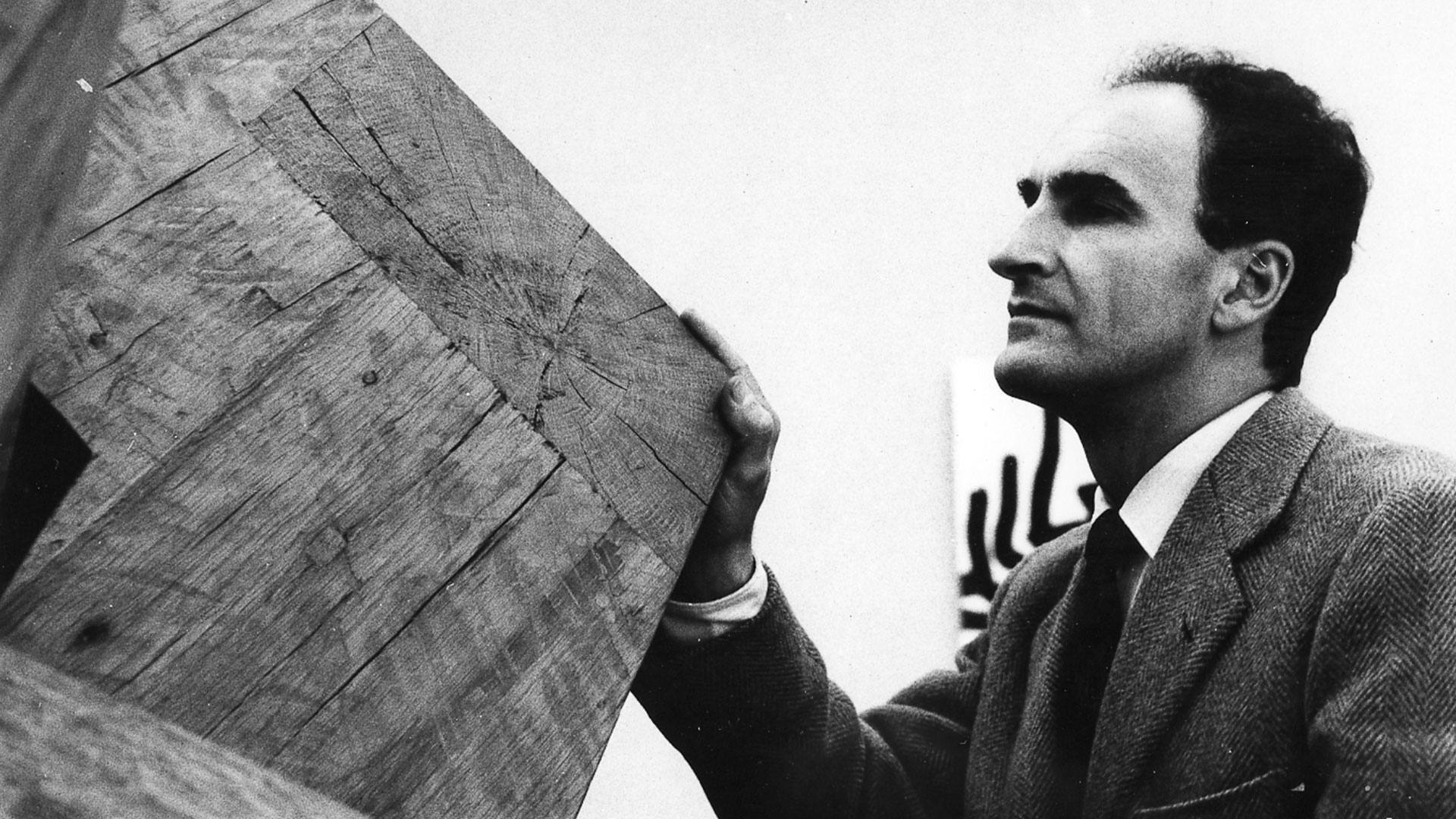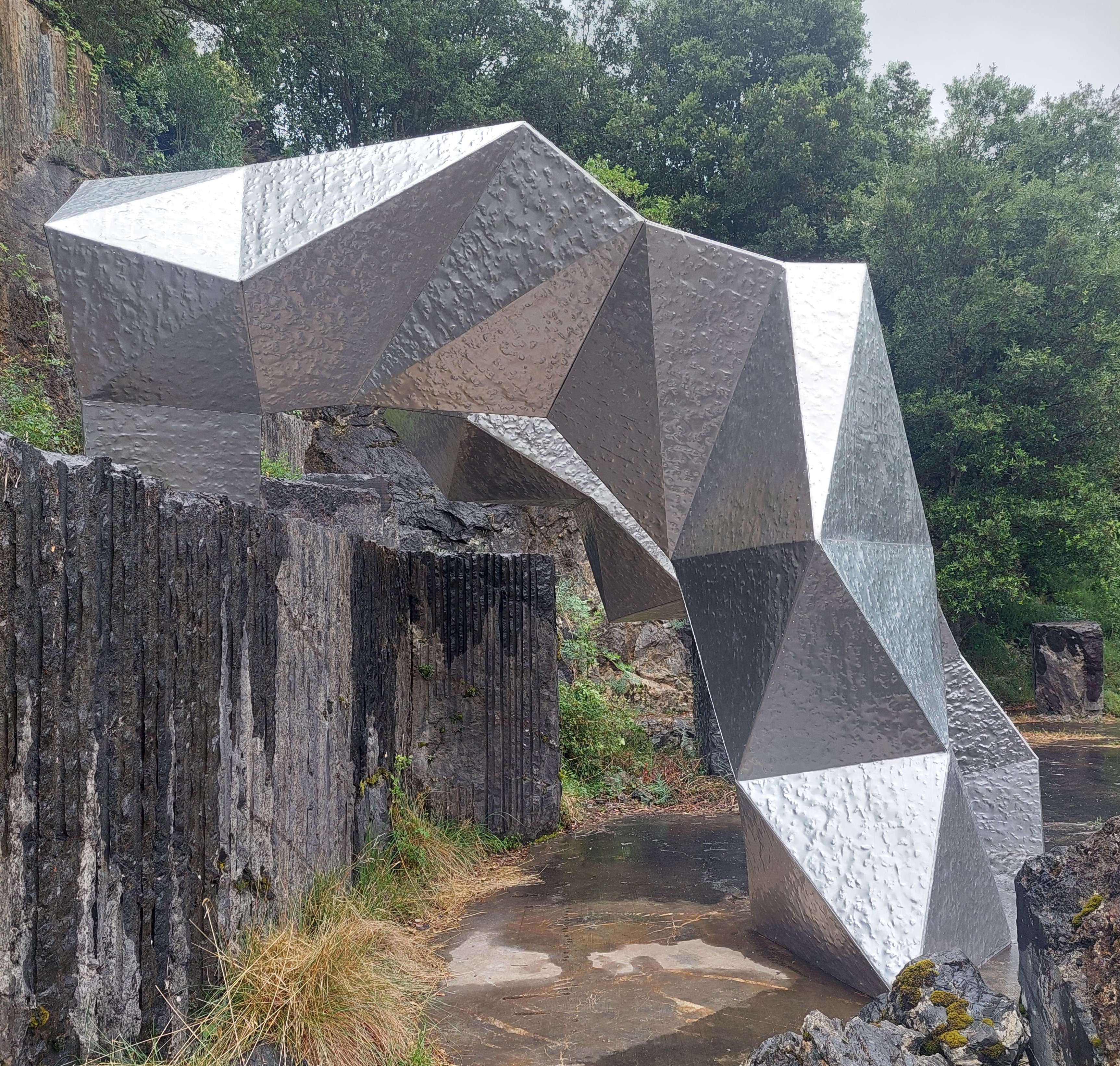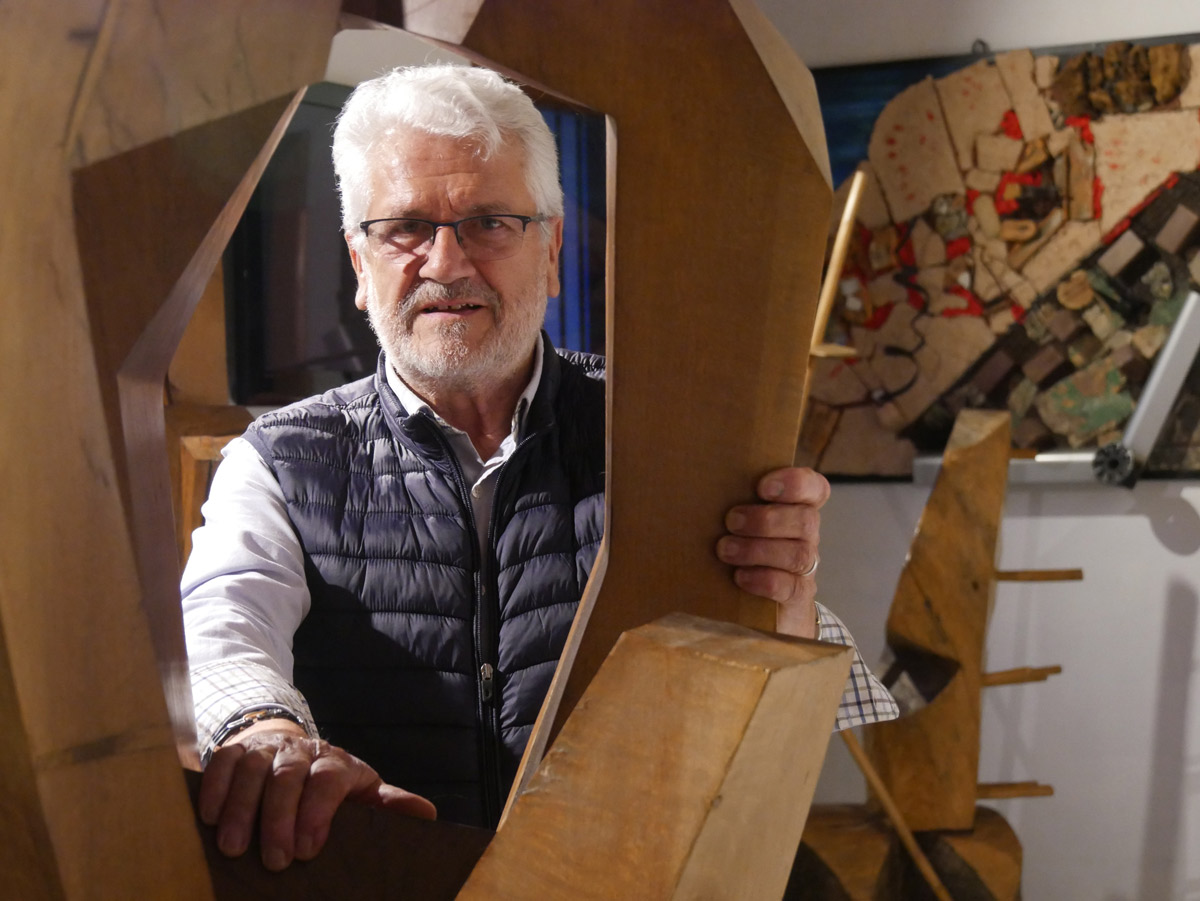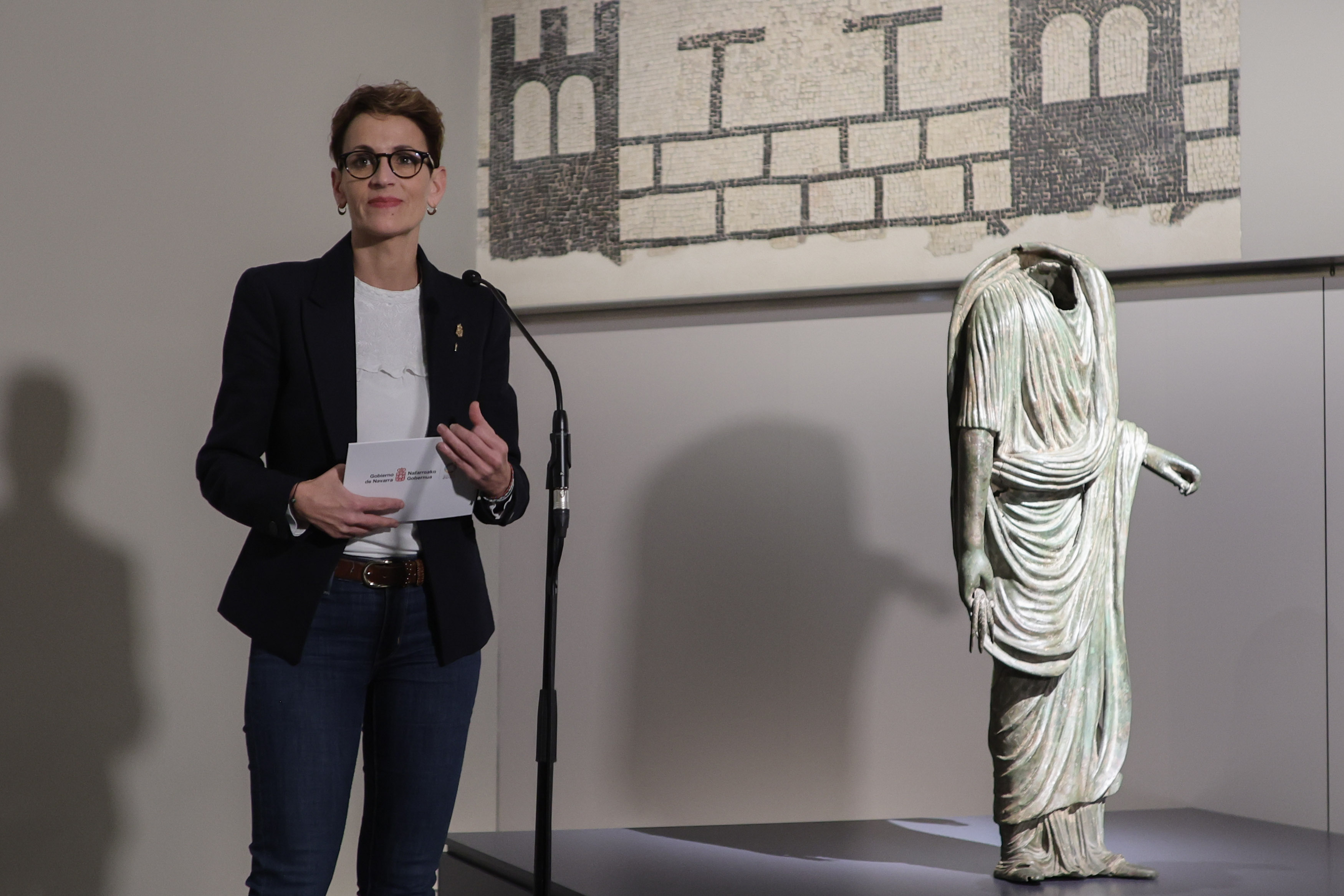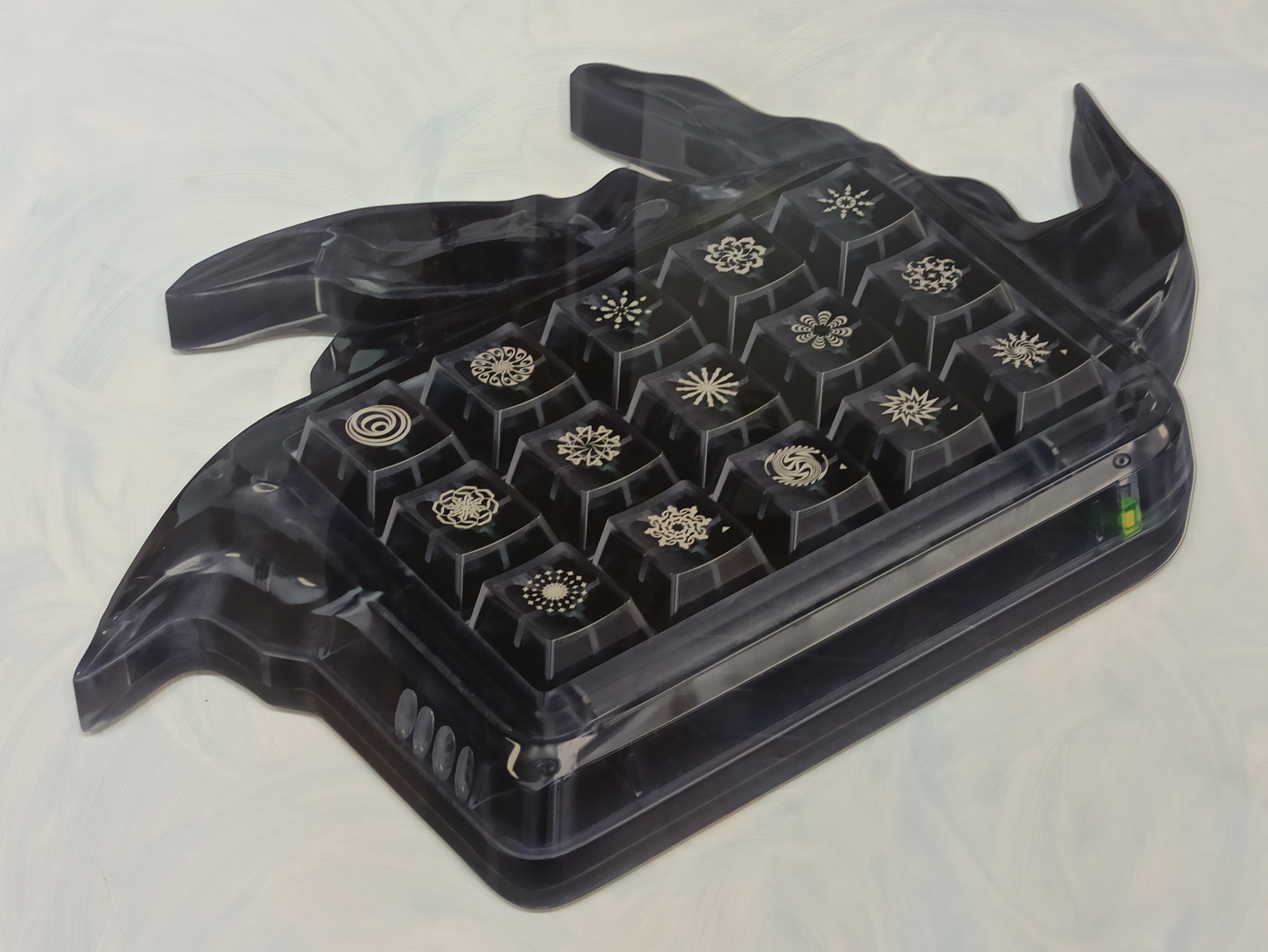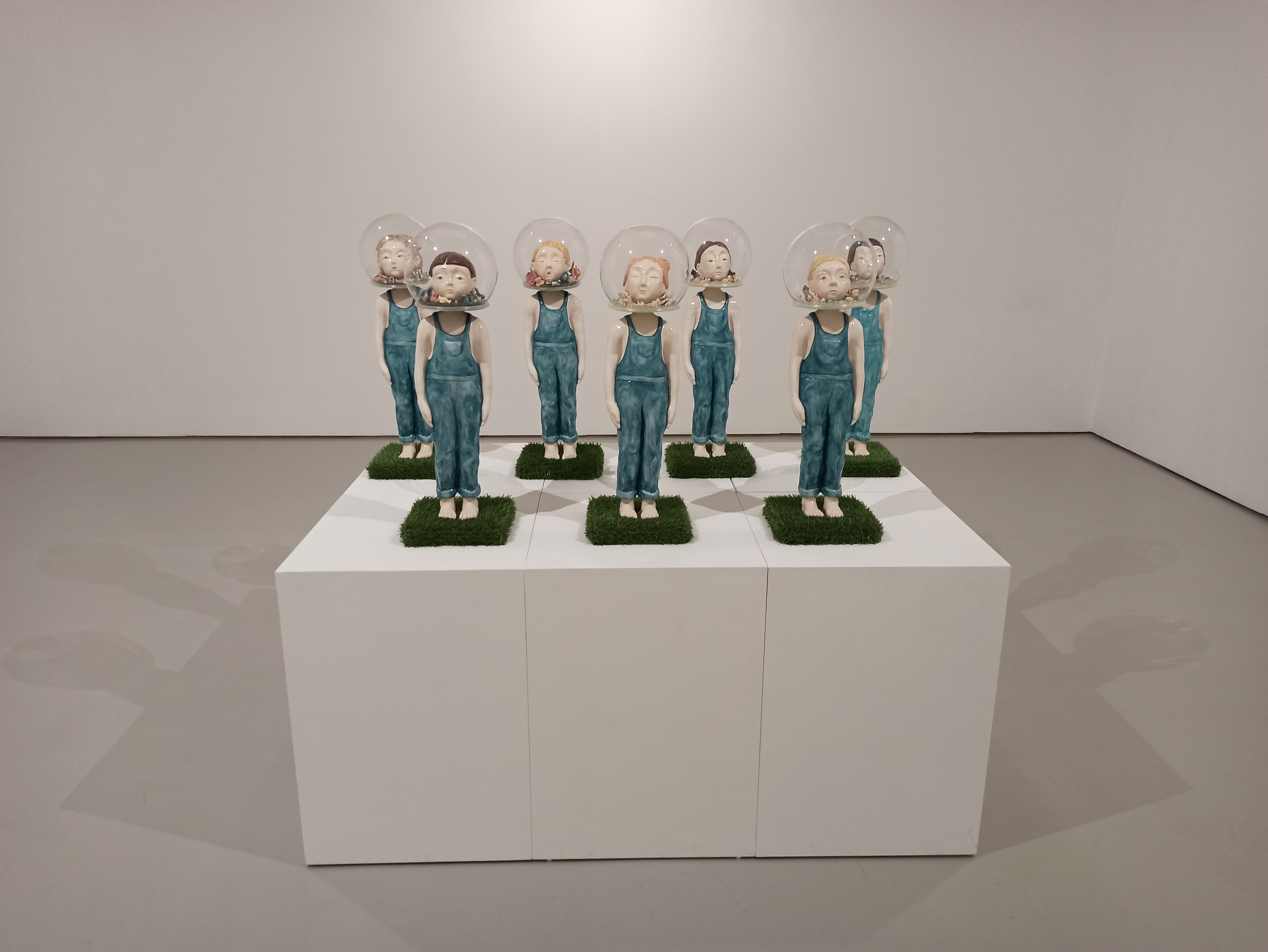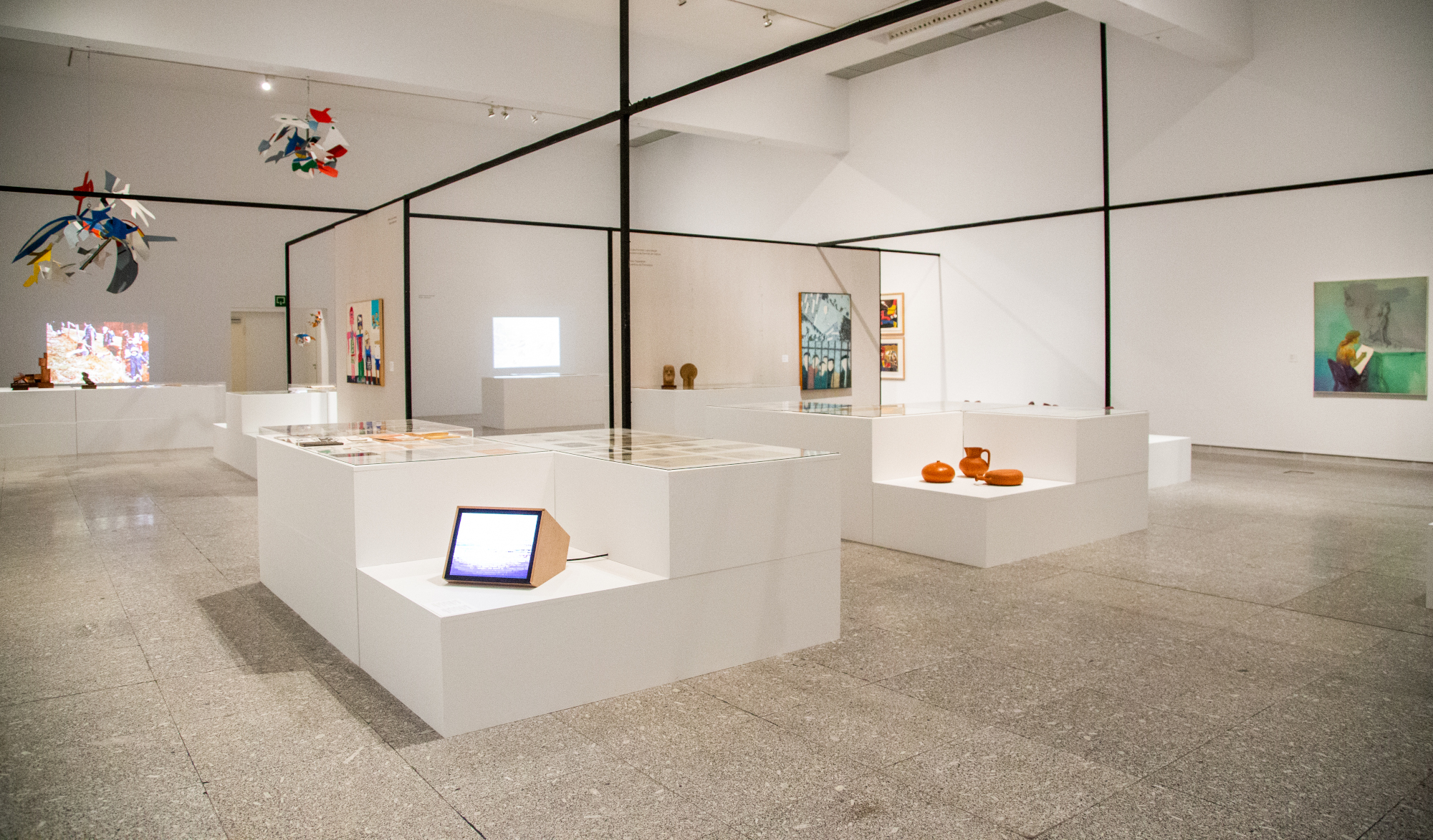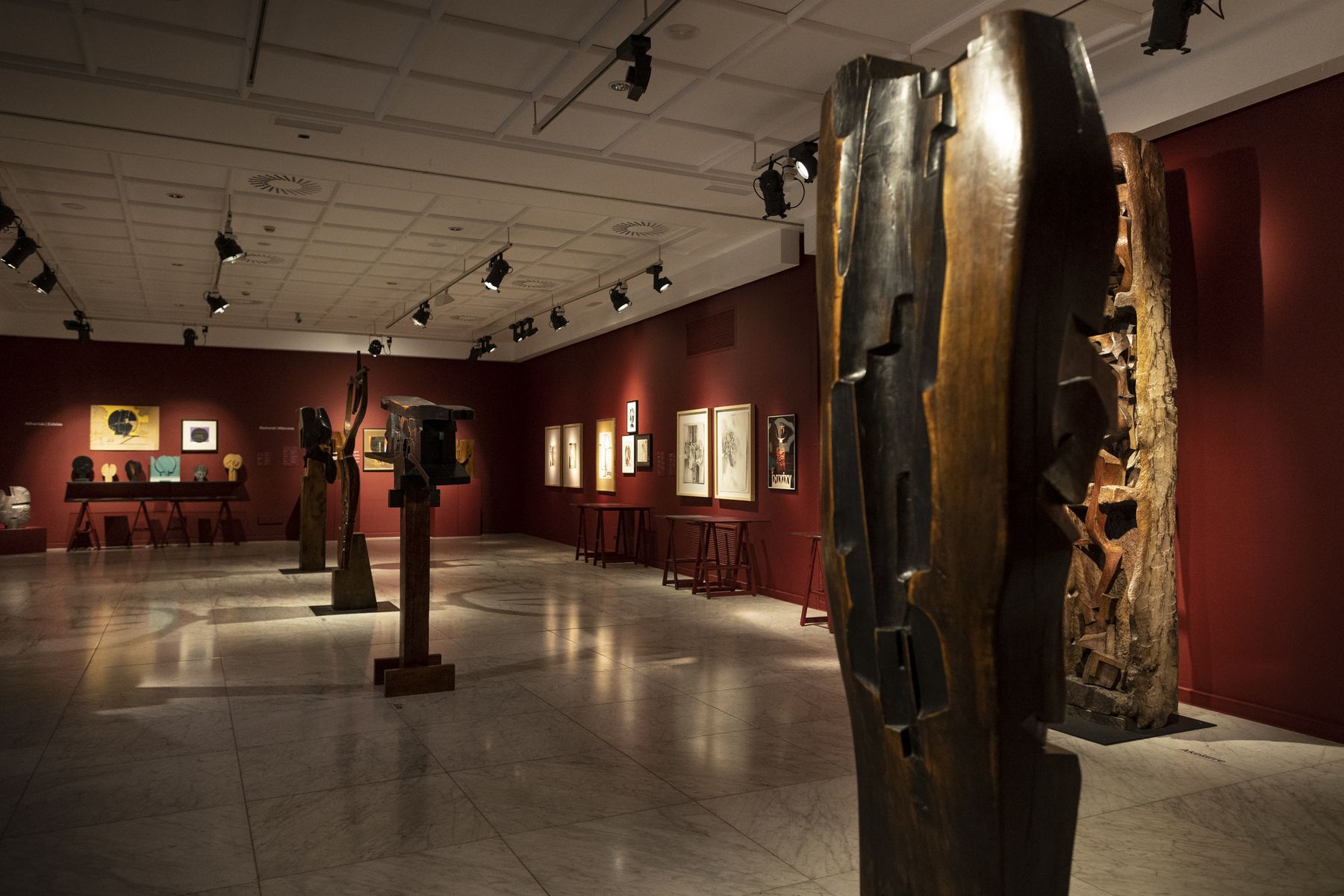In the belly of a whale
- Selma Huxley (1927-2020) was a Canadian historian and researcher. Since he first heard a friend that Euskal Herria maintained a transoceanic relationship with Newfoundland for centuries, his research focused on another direction: He installed in his sight Basque whales of the 16th and 17th centuries. He left Ottawa and with his four children he moved to Oñati, staying in the Provincial Historical Archive of Gipuzkoa investigating for two decades. The long hours of archiving and the tireless work of this woman allowed, among other things, the discovery of the Pasaitarra whale San Juan on the Red Bay in 1977, in front of the whale that is currently being built in the Cultural Maritime Branch Albaola. When the artist Katinka Bock knew this fact, he knew he wanted to do something related to this wonderful Artium exhibition story. This is how the Logbook exhibition (Navigation Journal) is born.
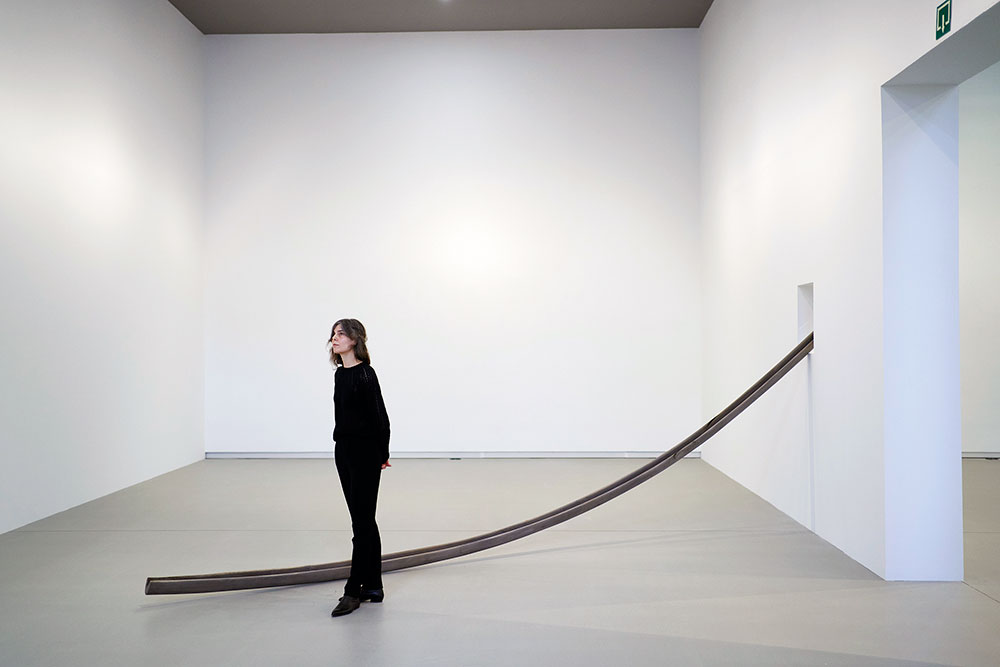
Katinka Bock (Frankfurt am Main, 1976) is a sculptor who creates his works closely to the geographical and contextual environment in which he works. It takes into account the architecture, urbanism, society, climate or the environment of the place where it works, so it develops local projects. The sculptures it creates – from wood, copper, ceramics, clay, steel – present them in a special way in space through subtle and careful displays. Blend, superimpose and tighten with skill the exterior and interior ends, natural and artificial, ephemeral and eternal. It creates meeting spaces between sculpture and space, weaving fine threads that bind and attract them.
To prepare his exhibition in Vitoria-Gasteiz, Bock made several trips to the Basque Country and the Artium Museum. I wanted to see over and over again the exhibition hall, analyze the multiple possibilities that space could have and get to know the surroundings of the museum so that its works had some kind of intertwining with the environment. On one of these trips he left Vitoria and along with a group of young artists he met the factory of Albaola de Pasai San Pedro. It was astonished to see how the San Juan nave was being built, which is being built in an artisanal way with the materials and tools of the time. He drew attention to the wooden boards with which the boat is built, the tables with which the keel, the mast and the ribs of the boat are built along a long piece of oak wood.
After seeing this, and after meeting Selma Huxley, he wanted to relate the exhibition hall to what he met in Albaola. One of the long wooden boards that were used to build whaling boats thought it could go through the showroom side-by-side. On the other hand, it worked as an excuse to bring some rays from the coast to Vitoria. Thus, with the help of the carpenters of Albaola, he worked the wooden curved table of eight meters length and prepared it for the exhibition. The effect produced by the piece of wood in the room is enormous, as the simple curvature of the wood part somehow breaks the rigid shape of the room and the reading of this exterior element (ocean, whaling, whaling) is very different. The Segment with Unknown Radius (Segment with unknown radius) has titled the work that shapes the exhibition hall located on the subsoil of the winery of a boat and a whale.
However, this is not the only intervention he has made in the architecture of the Artium hall: With the work Confusions Possible (Possible Mixtures) has made openings in false walls of the room, removing fragments of pladur and revealing the internal structure. Like the whale-shaped boat, the bow ribs have also been highlighted here inside the walls. Also, the circular windows with previous locks have been opened in line with this exhibition, and the circular windows that illuminate us from the outside, further accentuate the mood that makes us think we are inside a boat. Gradually, with very simple gestures, the artist has taken over the exhibition hall.

In the room we can see, rather divided, the works that Bock has done in the last five years, such as the sculptural installation One to Eight of Eight (one to eight, eight of luck). It is a set of eight pieces that, over eight easels, we find half a bronze comb, a shoe, a spoon or a fish, elegantly presented, as pieces of a parade. They could be objects that we would find at the bottom of the sea or in the belly of a whale, a collection of ancient instruments. It is interesting to observe how it works with different materials, especially when at the center of our journey we find an absorbent or radiator that binds to unconventional materials such as ceramics or wood.
In 2019, Bock performed an individual exhibition at the art center Pivô in São Paulo. I have to admit that I have known few sites that I found as special as this one. In the 1960s, the architect Oscar Nienmeyer built the imposing Copan building (6 blocks, 37 floors, 1,160 apartments, 72 shops and a church inside it), in which he is situated in the lower space dedicated to artistic research and exhibition. For the exhibition Avalanche (Elur-jausi), Bock first explored and studied the building itself and its surroundings, as usual in his working methodology. From these inspections came the idea that a month hung a blue cloth of 20 square meters from the Copan building. The weather and meteorology did their work and after a while picked up the fabric, cut it into small pieces and linked them to the exhibition. The sculpture of plants and cements that he created for this project built his own irrigation system that, through a system of canals, pipes and boats, provided a irrigation that reached the plants.
Katinka Bock puts forward proposals that need to be looked at in the corners, corners, slits, holes and more unsuspecting places. The visitor looking up at the Artium exhibition will find the Selma Huxley ceramic bust, which takes care of everything. Because this logbook is a journey that starts and ends with it.
Eskultura grekoerromatarrek bere garaian zuten itxurak ez du zerikusirik gaurkoarekin. Erabilitako materiala ez zuten bistan uzten. Orain badakigu kolore biziz margotzen zituztela eta jantziak eta apaingarriak ere eransten zizkietela. Bada, Cecilie Brøns Harvard... [+]
Behin batean, gazterik, gidoi nagusia betetzea egokitu zitzaion. Elbira Zipitriaren ikasle izanak, ikastolen mugimendu berriarekin bat egin zuen. Irakasle izan zen artisau baino lehen. Gero, eskulturgile. Egun, musika jotzen du, bere gogoz eta bere buruarentzat. Eta beti, eta 35... [+]
On Monday afternoon, I had already planned two documentaries carried out in the Basque Country. I am not particularly fond of documentaries, but Zinemaldia is often a good opportunity to set aside habits and traditions. I decided on the Pello Gutierrez Peñalba Replica a week... [+]
The search, the continuous search for a path, implies discovering what we do not want or expect. An artist should feed this appetizing search if he wants to keep his spirit alive. Your career is also going to need a big head office. Looking for new ways, uncovering and expanding... [+]
I get contradictions in art competitions. On the one hand, they place artists and works of art within the dynamics of competitiveness, leaving aside the transformative and collective character of art and placing them within the mercantilist logics, but it cannot sometimes be... [+]
Eskuin muturreko ekintzaileei leporatu diete eskultura bandalizatu izana: Hau kaka euskalduna da idatzi dute frantsesez, eta Heil pepito agur nazia margotu. Jean-René Etxegarai auzapezak jakinarazi du salaketa jarriko dutela. Gainera, Frantziako Alderdi Komunistaren... [+]
In the Plaza de los Fueros de Vitoria-Gasteiz there is a new metal sculpture that welcomes the exhibition of Nestor Basterretxea (Bermeo, 1924 – Hondarribia, 2014). The exhibition brings together more than 300 works created by artists from different areas, such as posters,... [+]









